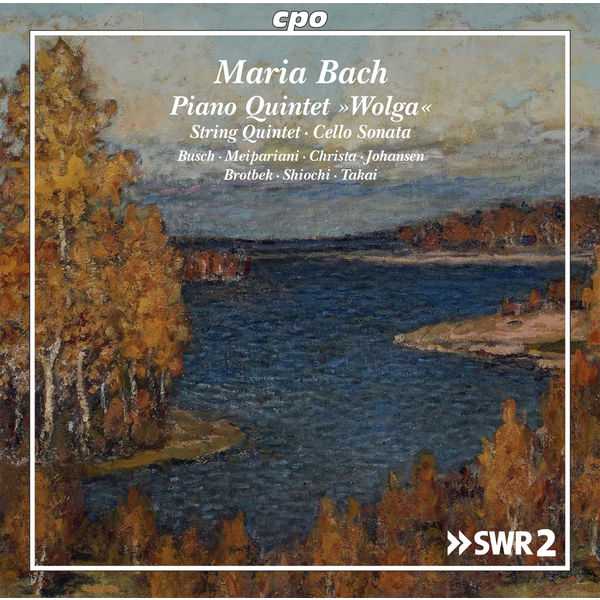
Composer: Emilie Maria von Bach
Performer: Christine Busch, Elene Meipariani, Klaus Christa, Matthias Johansen, Conradin Brotbek, Yukie Takai
Format: FLAC (tracks)
Label: CPO
Catalogue: 555341-2
Release: 2022
Size: 317 MB
Recovery: +3%
Scan: cover
Wolgaquintett
01. I. Ruhig bewegt
02. II. Variationen über das Wolgalied
03. III. Finale. Laufen lassen
String Quintet (1936)
04. I. Bewegt, energisch
05. II. Thema und Variationen. Andante sostenuto
06. III. Sakraler Tanz. Bewegt
Cello Sonata (1924)
07. I. Energisch bewegt
08. II. Romanze. Ruhig und breit
09. III. Finale. Rondo capricioso
Maria Bach, who studied with Joseph Marx at the University of Music and the Performing Arts in Vienna, was able to establish herself as a serious, successful composer during the 1930s. She received outstanding newspaper reviews, and renowned publishers were interested in her music. For example, Doblinger published her “Volga” Quintet. Her relationship with the Russian composer and conductor Ivan Boutnikoff came during this period of her first great successes; he instructed her in instrumentation, and she traveled with him throughout Europe. The three works recorded here for the first time – the “Volga” Quintet of 1928, the Sonata for Cello and Piano composed in 1924, and the String Quintet of 1936 – provide a representative overview of her chamber oeuvre.
Maria Bach writes with incredible virtuosity and on the highest level for the piano while never concerning herself with mere effects but instead developing tonal wealth and compelling compositional force. In the Piano Quintet she ventures to the limits of the doable and does so as can be done only by somebody who very precisely knows what the instrument has to offer. The same applies to her employment of the stringed instruments: the highly nuanced tone colors of her string parts attest to a profound understanding of the technical and tonal possibilities of these instruments. In 1943 the critic and composer Fritz Skorzeny aptly summed up the fascination produced by her music when he wrote in the Wiener Tagblatt: “In Maria Bach’s oeuvre, manifold elements, exoticism, gripping writing, poetically inspired, are combined”.